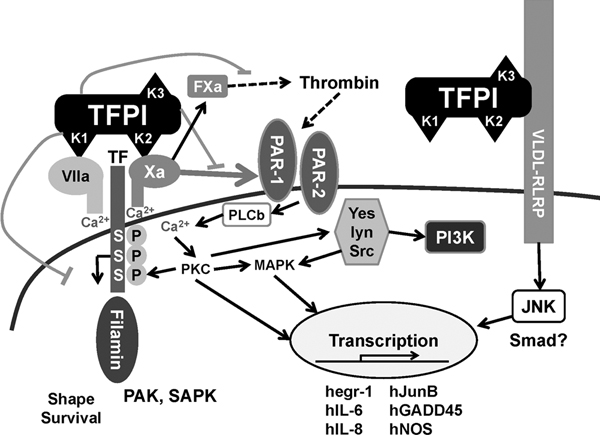Figure 1.

TFPI anti-coagulant and anti-inflammatory activities. TFPI limits the conversion by the TF-FVIIa complex from factor X to Xa and thrombin formation, and thereby reduces proinflammatory intracellular signaling via PAR-1 and PAR-2 receptors. TFPI attaches the LPS-binding protein complex and alters the host responses to bacteria through interaction with TLRs and CD14. hegr-1, human early growth response protein-1; hGADD45, growth arrest and DNA damage inducible gene; hIL-6, human interleukin-6; hIL-8, human interleukin-8; hJunB, oncogene; hNOS, human nitric oxide synthase; JNK, Jun amino-terminal kinase; LPS, lipopolysaccharide; lyn, oncogene homolog, Src; MAPK, mitogen-activated protein kinases; PAK, p21-activated protein kinase; PAR, protease-activated receptor; Pl3 K, phosphatidylinositol-3-kinase; PKC, protein kinase C; PLCb, phospholipase Cβ; SAPK, stress-activated protein kinase; Smad, moderates activity of TGF-β ligands; TF, tissue factor; TFPI, tissue factor pathway inhibitor; TLR, Toll-like receptor; Yes, a tyrosine protein kinase.
